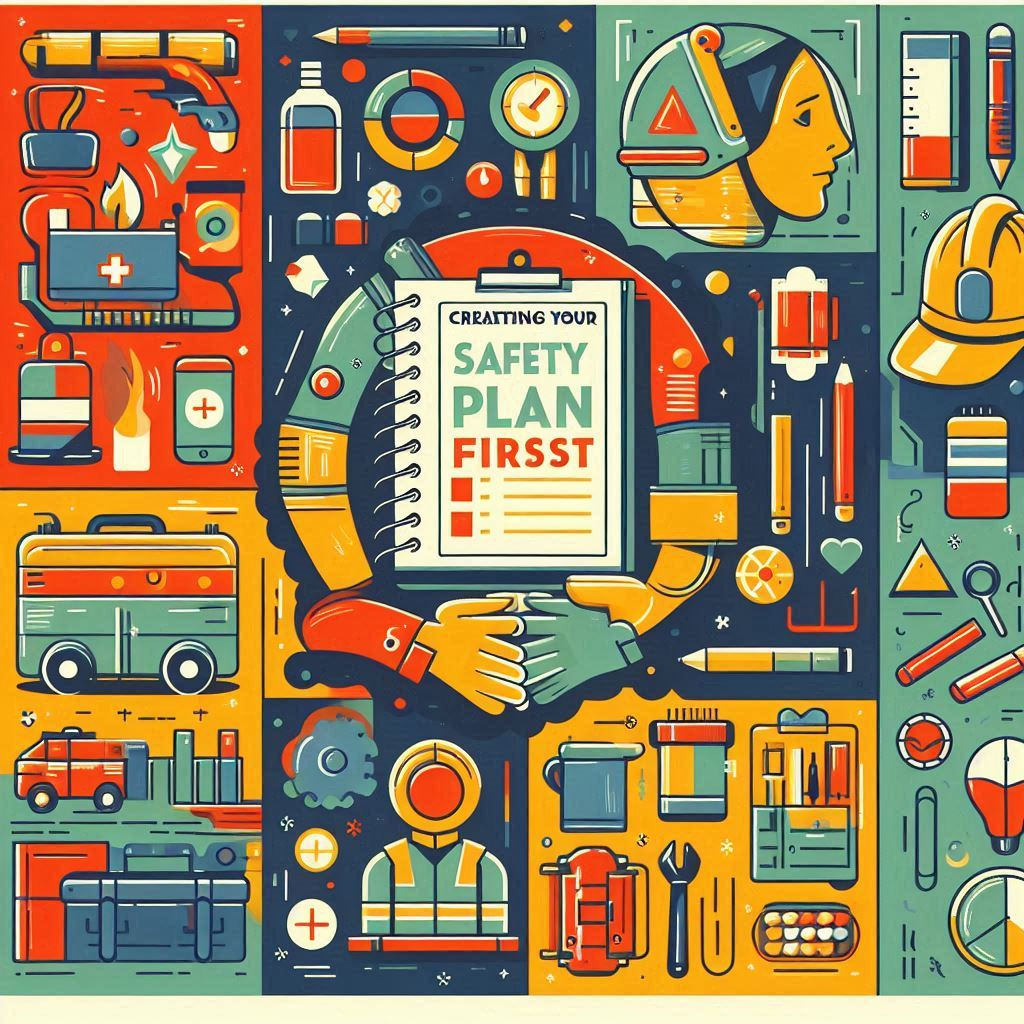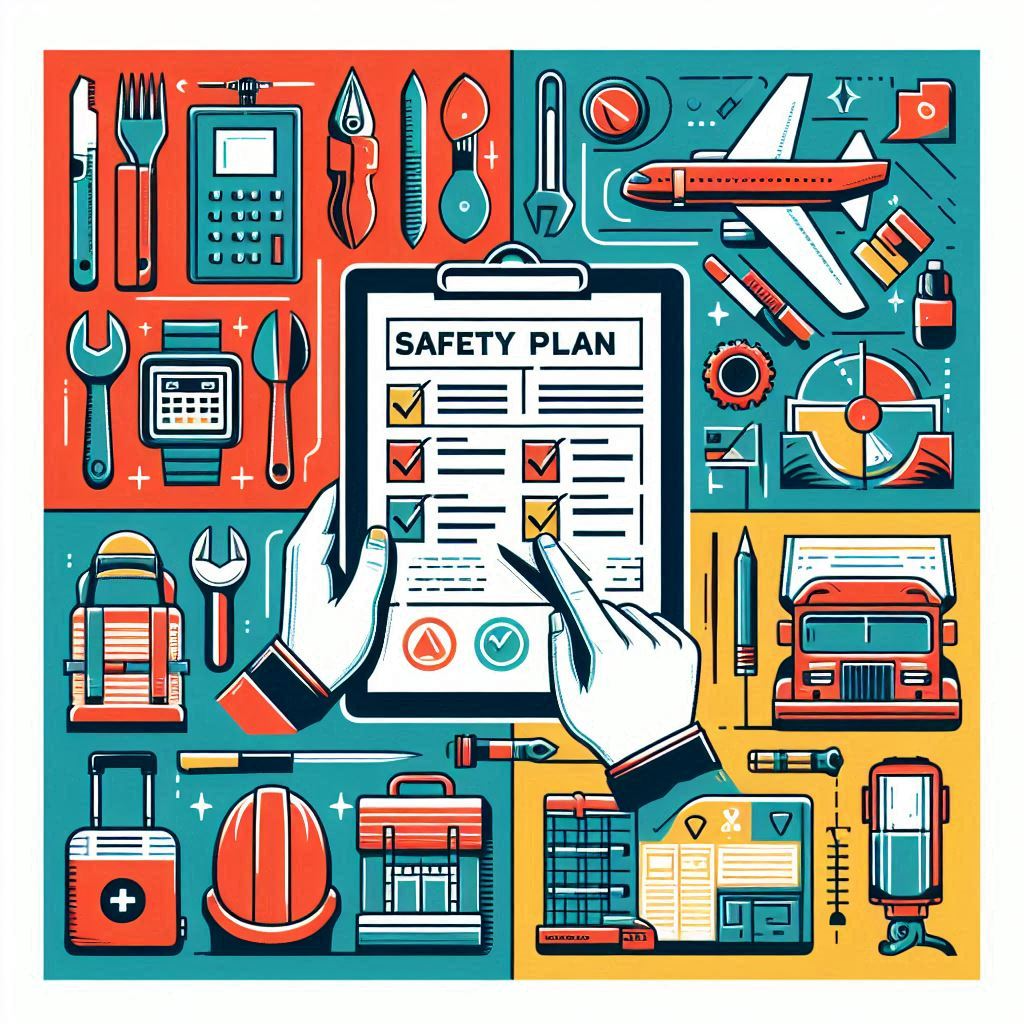Creating a Risk Assessment Action Plan: A Step-by-Step Guide
Managing risks in any organization is important. A clear and effective action plan can help. A Risk Assessment Action Plan identifies potential hazards and minimizes their impact on a business. By following a step-by-step guide, you can create a plan that ensures the safety and security of your employees, customers, and assets.
In this article, we will walk you through the process of creating a Risk Assessment Action Plan, providing you with the tools and knowledge to protect your organization from potential threats.
Understanding Safety Plans: What Are They?
Safety plans are important documents. They aim to prevent risks and keep everyone safe.
To make a safety plan, it’s essential to consider all potential risks and how likely they are to happen.
Everyone involved, like managers, staff, and external parties, should work together to create a strong safety plan. This helps ensure it’s effective and covers all possible risks.
Why Do We Need Safety Plans?

Having a safety plan is essential. It helps mitigate risks and ensures well-being. Without a safety plan, disruptions, productivity loss, legal issues, and financial implications can occur. The plan outlines goals, timelines, and strategies to address problems and hazards. It also assesses potential impact, provides structure, and improves risk management. A safety plan creates a proactive approach to risks, manages multiple elements, and captures all risks in a central location.
Types of Safety Plans You Might Need
There are different types of safety plans, including emergency action plans, fire safety plans, and risk management action plans. The type of plan needed depends on an individual or organization’s specific needs, based on the risks and hazards they face, such as their industry, location, and activities.
Safety plans vary based on the potential dangers and risks involved. Some focus on preventing risks, while others aim to reduce risks or minimize their impact.
For example, a risk management action plan focuses on identifying and evaluating potential risks and outlines steps to mitigate or eliminate those risks. On the other hand, a fire safety plan focuses on preventing and responding to fires in a specific location by using specialized solutions for fire system testing to ensure alarms, extinguishers, and sprinklers function properly.
Creating Your Safety Plan: First Steps

Goals: What Do You Want to Keep Safe?
Protective measures for organizations should focus on various areas within a risk management action plan.
The main goal is to keep people, assets, and the organization’s reputation safe from potential risks and hazards.
This involves developing strategies to eliminate or mitigate threats, such as setting clear objectives, establishing timelines, formulating steps to resolve potential issues, and regularly updating the plan.
It’s also important to have clearly defined roles and responsibilities, ensuring everyone understands expectations and everything is taken care of.
A risk management action plan helps address issues, problems, and hazards promptly. It also allows organizations to see the bigger picture and gauge the potential impact of risks and goals.
Make a Timeline: When Things Need to Happen
The timeline for the safety plan should include key events and milestones such as defining goals, outlining timelines, formulating strategic steps, and setting up milestones. Each step should be completed according to carefully calculated timelines, with regular updates to ensure relevance and effectiveness.
The timeline can be adjusted if circumstances change through regular reviews of risk management actions at the beginning of new projects and the continual improvement component of a risk management plan.
Who’s In Charge? Picking Your Safety Team
The safety team for a risk action plan should include employees from different departments or those most at risk. This could include safety managers, maintenance personnel, project managers, and human resource managers.
Each team member should provide input, undergo safety training, identify and report risks, and ensure compliance with safety protocols. They must be ready to respond to incidents by following their training and company protocols.
Important Parts of a Safety Plan

Find the Dangers: Spotting What’s Not Safe
Here are some ways to spot potential dangers and hazards:
- Conduct regular safety inspections.
- Identify potential unsafe conditions.
- Look out for dangerous behavior from employees.
You can assess the severity of a potential danger or hazard by analyzing its probability of occurring and estimating its potential costs and impact on the organization. This helps determine how serious a risk is.
To address and mitigate potential dangers in a safety plan:
- Outline clear objectives.
- Create a detailed timeline for safety measures.
- Develop strategic steps to resolve issues.
- Establish milestones.
- Update the safety plan regularly to ensure its effectiveness.
Size Up the Dangers: How Bad Could They Be?
A safety plan needs to consider potential dangerous risks. These risks include hazards in the work environment, possible accidents, security threats, and natural disasters.
The risks could lead to injury and damage to facilities or equipment, affecting business operations. These dangers can harm employees, community members, and the environment.
The safety plan should outline clear steps and strategies to mitigate these dangers. This can involve regular safety audits, employee training on workplace safety, emergency response procedures, and risk evaluation processes.
These measures help to ensure the safety and well-being of all individuals involved and protect the surrounding environment.
Making Choices: How to Deal With the Dangers
One strategy for making choices and managing dangers in a safety action plan is to outline goals and key strategies to resolve issues.
Additionally, a risk management action plan can help organizations prioritize and assess potential dangers through risk identification, risk assessment, and a risk register to capture all risks.
To keep a safety plan up to date, individuals should outline timelines and milestones and formulate strategic steps to resolve issues.
Continual updates to the action plan are crucial to ensuring that the plan remains relevant and effective under different circumstances.
When Things Change: Keep Your Plan Up-to-Date
In the risk action plan, updating the safety plan is essential when the organization’s circumstances change. This includes growth, downsizing, relocation, or any significant operational impact. It’s also vital when new risks are identified or existing ones change.
To ensure your safety plan is always up-to-date, regularly evaluating and revising the plan is practical. Defining goals, outlining timelines, and formulating strategic steps to resolve issues are important steps to consider. Updating the safety plan after every attempt helps ensure its relevance and effectiveness in different situations.
Regularly reviewing and revising your safety plan is essential because it allows for adjustments based on changing conditions. It ensures that the plan effectively mitigates risks and addresses new concerns. Keeping the plan up-to-date helps an organization tackle problems and see the bigger picture of potential impact.
Helpful Tips: Using Examples to Build Your Plan
Keeping Track: Writing Down Your Safety Steps
When writing a safety plan:
- Outline clear goals and objectives
- List specific action steps
- Establish a timeline for safety measures
- Develop strategies for potential safety issues.
Keeping track of safety steps ensures all necessary measures are in place, minimizing hazards and consistently following protocols.
A written record of the plan is crucial:
- Serves as a reference for employees
- Helps train new staff and volunteers
- Provides documented safety history for legal or audit purposes.
Important Words You’ll See in Your Safety Plan

Some essential words in your safety plan are “risk,” “action,” “plan,” “reduce,” and “remove.” Understanding these words can help you better implement your safety plan by providing explicit definitions and directions on effectively addressing risks and hazards. Understanding these terms ensures that individuals know what actions to take and how to approach potential safety issues.
Resources available to help understand and navigate your safety plan include dedicated sites offering comprehensive information about risk management, action plans, and templates, such as those available at ENISA and Rockingham, WA. These resources provide detailed guides, examples, and templates for creating a risk action plan, ensuring that organizations have access to the tools they need to develop and implement an effective safety plan to protect their operations.
Learning More: Where to Find Help with Your Plan
Dedicated sites like ENISA and Rockingham WA offer more information about risk action plans. IT professionals, risk management consultants, safety organizations, and business consultants can assist with developing a safety plan. They can access information or attend workshops to improve their understanding of safety planning through websites, local universities, professional organizations, or safety community events.

Vizologi is a revolutionary AI-generated business strategy tool that offers its users access to advanced features to create and refine start-up ideas quickly.
It generates limitless business ideas, gains insights on markets and competitors, and automates business plan creation.


